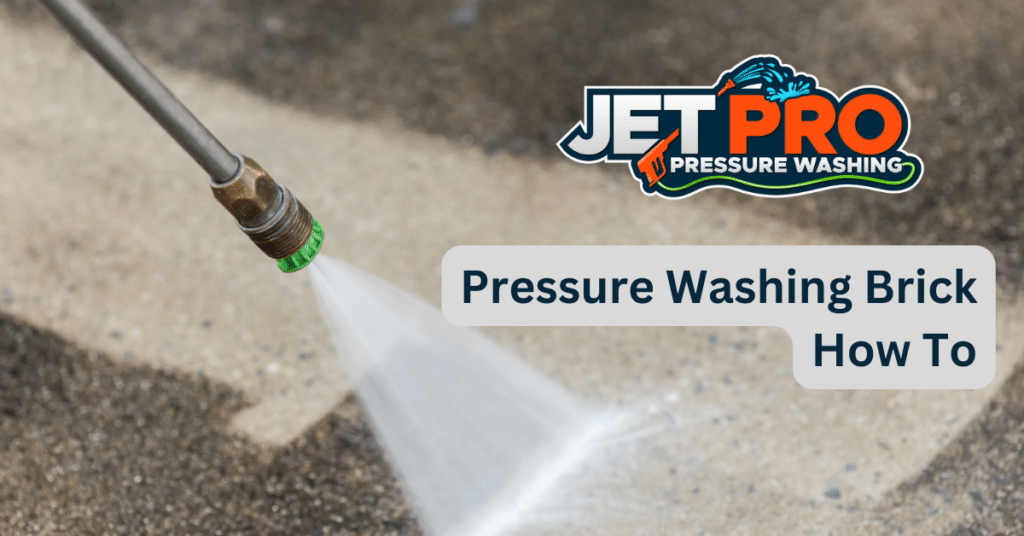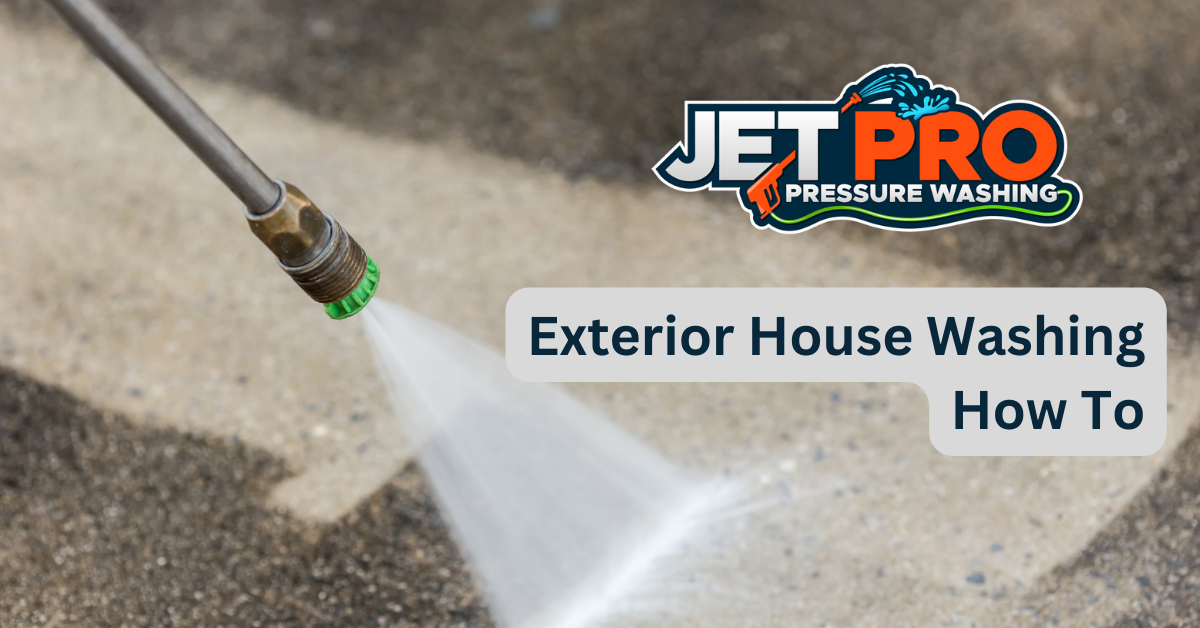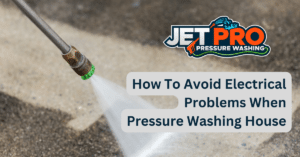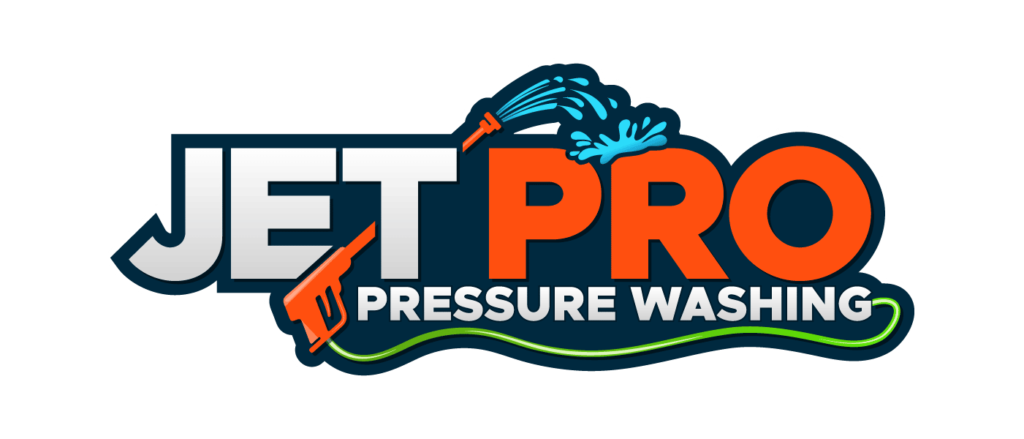Power washing brick is a great way to revive old, weathered, and stained brick surfaces. However, it can be a challenging task to do it properly without the right pressure washing equipment and cleaning solutions. That’s why it’s important to seek the help of a highly experienced power washing company. They provide an informative guide on how to pressure wash brick, from selecting the right pressure washer to finishing up the pressure washing process. With their tips and guidance, anyone can pressure wash brick like a pro, as rhyme and reason are essential for precise execution.
Looking to pressure wash your deck before staining it? Check out our guide on how long to wait to stain a deck after pressure washing. And if you want to avoid leaving lines while pressure washing, our guide on how to not leave lines when pressure washing is a must-read. Plus, if you’re interested in window cleaning, we’ve got you covered with our expert tips and tricks. But first, let’s dive into our guide on pressure washing brick.
Choosing the Right Pressure Washer
Selecting the correct power washer for the task is critical in achieving successful results. Pressure washers are available in a variety of formats, from light-duty all the way up to industrial-grade machines.
When pressure washing brick, it is important to select the right pressure washer to avoid damaging the surface. A light-duty pressure washer is usually sufficient for basic cleaning of brick. If a greater degree of cleaning is required, a medium-duty pressure washer is recommended. For extremely tough stains, an industrial-grade pressure washer is necessary.
The power of the pressure washer should also be determined by the size of the area to be cleaned. The pressure washing nozzle should always be kept at least 12 inches away from the surface of the brick. A cleaner specifically designed for brick should be used and always read and follow the instructions on the product label.
After the cleaning is finished, rinse the area with clean water. Allow the surface to dry thoroughly before applying any sealer or other protection.
Preparing the Brick Surface
Prior to pressure washing, it is important to properly prepare the brick surface; surveys indicate that up to 90% of pressure washing jobs require some form of preparation.
This can include a thorough cleaning of the surface area, removing dust, dirt, and other debris from the brick. It is also important to ensure that the surface is dry before applying the pressure washer. This can be done using a broom, a vacuum cleaner, or a wet/dry vacuum.
Once the surface is clean and dry, it is ready for pressure washing. The pressure washer should be set to the appropriate pressure for the brick surface. It is important to ensure that the pressure is not too high, as this can cause damage to the brick and mortar.
When selecting a pressure washer, consider the size of the area being cleaned and the type of material, as this will determine the appropriate pressure. It is also important to use the right detergent or cleaning solution for the job, as this will help to remove any stubborn stains.
It is important to use the right technique when pressure washing brick. Start at the top and work downwards in overlapping strokes. This will help to ensure that no area is missed. In addition, it is important to keep the pressure washer moving at all times and to avoid concentrating on any one area for too long. This will help to avoid any damage to the brick.
Applying the Pressure Washer
Applying the right pressure to the brick surface is essential to achieving the desired results without causing any damage. It is important to start with the lowest pressure setting on the pressure washer and gradually increase the pressure if needed. This will help to ensure the pressure is not too high, which can cause damage to the brick, and help to achieve the desired results.
The nozzle should be held at a distance of 8-10 inches from the surface and moved in a slow, steady motion. The pressure should also be increased or decreased depending on the type of dirt or grime on the surface and the desired results.
When using a pressure washer on brick, it is important to use a fan nozzle tip, which creates a wide, gentle spray to avoid damaging the brick. It is also important to maintain a consistent pressure and keep the nozzle moving at all times. If the nozzle is held in one place for too long, it can cause damage to the brick. The pressure washer should also be moved in a back-and-forth and up-and-down motion to ensure that all of the dirt and grime is removed.
If using a detergent with the pressure washing, it should be applied after the pressure washer and allowed to sit for several minutes. This will help to loosen the dirt and grime, making it easier to remove. The detergent should then be rinsed off using a low pressure setting. It is important to make sure all of the detergent is rinsed off, as it can cause discoloration and damage to the brick.
Using the Right Cleaning Solution
It is important to choose the correct cleaning solution to ensure the desired results without compromising the integrity of the brick surface. Different cleaning solutions can be used for different types of brick, so it is important to know the type of brick that is being cleaned.
Mild detergent solutions are effective for most brick and can be used with standard pressure washers. For tougher stains, stronger detergents may be required. When using stronger detergents it is important to ensure that the pressure washer is suitable for the cleaning solution.
When using a pressure washer with any cleaning solution it is important to take safety precautions. Protective eyewear and clothing should be worn when using a pressure washer, as well as gloves to protect the hands. If the cleaning solution is corrosive, it is important to use a face mask and gloves to protect from any potential irritants.
It is also important to test the cleaning solution on a small, inconspicuous area of the brick surface before using it on the entire surface. This will help to ensure that the cleaning solution will not cause any damage or discoloration to the brick.
Following these steps can help to ensure that the desired results are achieved without compromising the integrity of the brick surface.
Finishing Up the Pressure Washing Process
Once the cleaning solution has been applied, the pressure washing process can be completed to restore the brick surface. The pressure washer should be adjusted to a lower PSI setting, or pressure per square inch, in order to avoid damaging the brick. The pressure washer is then directed over the brick surface using a back-and-forth motion. This should be done in a controlled manner to ensure the entire surface is evenly cleaned.
Once the brick is cleaned, the pressure washer should be switched off. The brick should then be rinsed with a garden hose to remove any remaining cleaning solution. This should be done with a gentle stream of water in order to avoid damaging the brick. To finish, the brick should be allowed to dry naturally.
When the brick has dried, it is important to inspect it to ensure it is free of any remaining dirt or debris. If any is found, it can be removed using a stiff brush or cloth. The brick should then be sealed to help protect it from the elements. Sealing the brick will also help maintain its appearance.
Frequently Asked Questions
How often should I pressure wash brick?
It is recommended that brick should be pressure washed regularly to keep it looking its best. The frequency of pressure washing depends on the environment, however, a general rule of thumb is to pressure wash the brick every two to three years.
This will help to remove dirt, grime and other debris that can build up on the surface and detract from the overall appearance of the brick.
Is pressure washing brick safe for the environment?
Pressure washing brick can be a safe and effective way to clean the exterior of your home or business, however it is important to consider the environmental impact.
For example, power washers use a lot of water and can damage the surrounding natural environment if the water is not properly managed.
It is important to choose a power washer that is designed to reduce water usage and minimize runoff.
Additionally, it is important to use biodegradable cleaning solutions that are gentle on the environment and won’t damage nearby plants and wildlife.
Taking the time to properly manage the pressure washing process can ensure that you keep the environment safe while still achieving the desired results.
What is the best way to protect the brick after pressure washing?
Pressure washing brick can be an effective way to restore its original appearance. After pressure washing, it is important to protect the brick in order to maintain its appearance and prevent damage.
The best way to protect the brick is to apply a sealant, such as a waterproof sealant or a silane-siloxane sealant. These sealants form a protective barrier on the brick and help to prevent water and dirt from penetrating and damaging the brick.
Additionally, these sealants can help to preserve the color and texture of the brick, making it look like new for longer.
Are there any health risks associated with pressure washing brick?
Rhetorical question: Have you ever wondered about the potential health risks associated with pressure washing brick?
Though the practice of pressure washing brick may seem relatively harmless, it is important to understand that it is not without its risks.
Pressure washing can cause dust and debris to be released, leading to respiratory problems as well as skin irritation.
Additionally, the use of high-pressure water can also pose a risk of physical injury if not done carefully.
It is therefore important to take proper safety precautions before and during the pressure washing process.
Can I pressure wash brick myself or do I need to hire a professional?
Pressure washing brick can be done by yourself, but it is advisable to hire a professional since it is an involved process that requires the use of specialized equipment and safety precautions.
Pressure washing requires a high pressure washer to remove dirt, mould, and other debris from the brick. It is important to take safety measures including wearing protective clothing and eye protection before beginning the process, and following the instructions on the pressure washer.
Hiring a professional pressure washer ensures that the job is done correctly and safely.
Conclusion
The pressure washing process has now come to an end. With the right pressure washer and cleaning solution, the brick surface is now looking clean and refreshed.
The powerful combination of water and detergent has removed dirt and debris, leaving behind a stunning result that will last for years to come. It’s a process that yields remarkable results, and one that is sure to bring a sense of satisfaction and accomplishment.
Pressure washing can be a time-consuming task, but the end result is a lasting beauty that is worth the effort.





